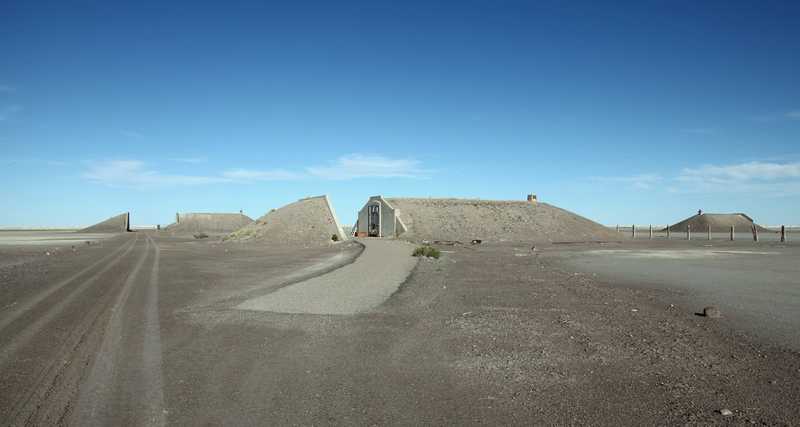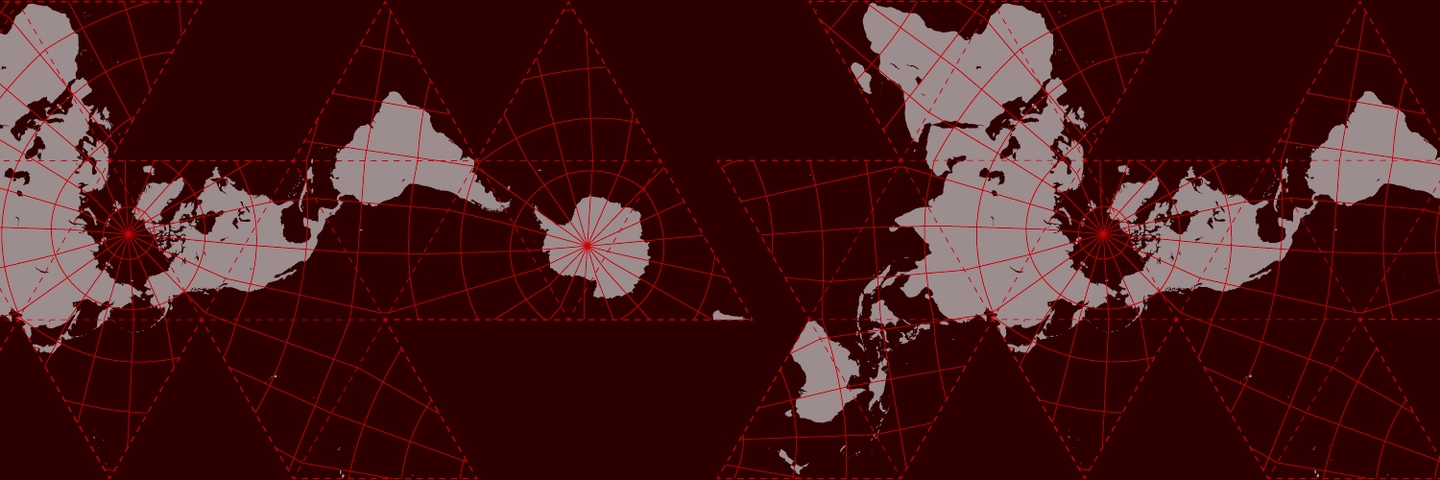
When AUKUS was announced in September 2021, countries in the Indo-Pacific and East Asian regions had every reason to wonder what had hit them. The first thing that stood out was the audacious secrecy of its negotiation—a cocooned statement of intent among the old powers of the Anglosphere. It also harked back to the age of secret treaties condemned by US President Woodrow Wilson during the First World War. A former Princeton University academic turned politician, he saw clandestine negotiations cloaked and concealed from press crews, opposition politicians and countries familiar, friendly and adversarial as tinder for the ignition of global conflict.
In his speech on War Aims and Peace Terms on 8 January 1918, Wilson outlined fourteen points directed at weakening the Central Powers and stiffening the sinews of the Allies. The first stands out as the most aspirational of goals in a postwar world: ‘Open covenants of peace, openly arrived at, after which there shall be no private international understandings of any kind but diplomacy shall proceed always frankly and in the public view’. This principle has since been violated repeatedly, but its articulation made an important point: diplomacy and negotiations done in total secrecy, absent scrutiny and debate, can have dire consequences.
The first darts of venom to be directed at the trilateral AUKUS arrangement, which prominently features the construction and provision of up to eight submarines with nuclear propulsion technology to the Royal Australian Navy, came from Paris. Criticism from France could not be easily cast aside, as France has its own military and security interests in the Indo- and Asia-Pacific, and the AUKUS security pact demonstrated that Australia had violated the norm of pacta sunt servanda—that international agreements must be kept. This is not idle speculation: Canberra’s conduct was a clear breach of the presumption of trust inherent in modern international society. As James Barnes and Samuel M. Makinda write, ‘Australia’s willingness to break its promises to France not only undermined the rules-based international order that AUKUS members proclaimed to be defending, but also harmed diplomatic relationships’.
While the French vented their fury at the cancellation of a contract for twelve Barracuda diesel-electric submarines which they thought was still in progress (the vessels had yet to make it to water), a number of countries wondered how the balance of power in the Indo-Pacific might be affected. On the face of it, this was a crude effort on the part of three countries to contain China and initiate an arms race, all on the pretext of safety, prosperity and security.
Still bruising in its freshness, the AUKUS announcement prompted a range of responses in the region. For Taiwan, the commitment showed a sense of nerve in the face of Beijing, irrespective of whether the ‘one country, two systems’ understanding was still in place. The more heated the rhetoric has become, the less historical understanding is shown. In a startled response from self-appointed moral guardians from Canberra to Washington, there is a sense that this island must be protected and that this will, if necessary, be the justification for war. A statement from the Chinese Foreign Ministry hit a predictable note of consternation, with spokesperson Zhao Lijian stating that the pact was ‘severely damaging regional peace and stability, intensifying an arms race and damaging international nuclear non-proliferation efforts’. And Japan reacted with due and diplomatic caution. In a statement from Tokyo released in response to a conversation between Foreign Minister Motegi Toshimitsu and his counterpart Marise Payne, Japan, showing its proximity to Washington, ‘welcomed the security cooperation between Australia and the United States and the launch of AUKUS, which both a aim to strengthen their engagement in the Indo-Pacific region’.
The responses from the Association of South-East Asian Nations (ASEAN) proved mixed. The Philippines, a historical protectorate of the United States which has a fraught association with Washington, saw the alliance as a matter of balancing. ‘There is an imbalance in the forces available to the ASEAN member states, with the main balancer more than half a world away’, Foreign Secretary Teodoro Locsin Jr observed in a statement on 21 September 2021. ‘The enhancement of a near abroad ally’s ability to project power should restore and keep the balance rather than destabilise it’. President Rodrigo Duterte’s view was a bit different, reflecting his own reservations about the US–Philippines relationship: he argued that the agreement risked triggering a ‘nuclear arms race’. That said, the Philippines Department of National Defence was also keen to pursue its own modernisation agenda, announcing some months before that it would be seeking to acquire two submarines to the value of US$1.47 billion.
In contrast, in its statement of 16 September 2021, Singapore’s prime minister, Lee Hsien Loong, ‘noted the long-standing bilateral and multilateral relations that Singapore shared with Australia, the United Kingdom, and the United States, and hoped that AUKUS would contribute constructively to the peace and stability of the region and complement the regional architecture’. In Vietnam, government spokesperson Le Thi Thu Hang pointedly remarked that ‘All countries strive for the same goal of peace, stability, cooperation and development in the region and the world over’, and last month reiterated the view that ‘Peace, stability, cooperation and involvement in the region and the world are the common goals of all nations’. For Vietnam, the pursuit of atomic and nuclear energy should only be done ‘for peaceful purposes and for the socio-economic development of countries’.
For the Kingdom of Thailand, AUKUS had a potentially stimulating effect. Its own submarine program hinged on the procurement of three Chinese-built, diesel-powered Yuan-class submarines, but these had been delayed for reasons of utility—why have them in an unthreatening environment? As Tita Sanglee in The Diplomat put it, AUKUS ‘dramatically heightened the risks of an arms race and nuclear proliferation, thereby providing the Royal Thai Navy (RTN) with a new justification to quickly get its hands on the long-overdue subs’. Officially, however, Thailand remains historically cautious in revealing its hand, preferring to maintain close relations with both the United States and China. Disapproval and reproach need to be read in context. Prime Minister Prayut Chan-o-Cha, for his part, delivered a pre-recorded message at the United Nations pledging his country’s support for the Treaty on the Prohibition of Nuclear Weapons and the Nuclear Non-Proliferation Treaty (NPT), suggesting reservations about AUKUS.
More overt concerns were not far off. Indonesia’s Ministry of Foreign Affairs was less than delighted, expressing concern ‘over the continuing arms race and power projection in the region’ and calling on ‘Australia to maintain its commitment towards regional peace, stability, and security in accordance with the Treaty of Amity and Cooperation’. President Jojo ‘Jokowi’ Widodo also noted his displeasure at the secrecy of the arrangements, and the way the pact was arrived at without consultation with Indo-Pacific powers. The Jakarta Post reported that Jokowi was unimpressed by the clandestine approach taken by Scott Morrison, a position aggravated by the fact that Indonesia’s foreign minister, Retno L. P. Marsudi, and defence minister, Prabowo Subianto, had met with their Australian counterparts, Marise Payne and Peter Dutton, a mere six days before the announcement. According to a senior Indonesian cabinet minister, ‘The Australian ministers simply told their Indonesian hosts that there would be an announcement on the security issue, but without any further explanations’. In seeming retaliation, the president refused to receive Scott Morrison on his way home from the 21 September summit with Joe Biden and Boris Johnson at the White House.
Finally, Malaysia’s foreign minister, Saifuddin Abdullah, noted that AUKUS had the potential to precipitate an ‘escalation of [the] arms race in the region’, and ‘could also potentially spark tension among the world superpowers and aggravate aggression between them … particularly in the South China Sea. Saifuddin’s colleague, Defence Minister Hishammuddin Hussein, even went so far as to say that he would be seeking Beijing’s views on the subject: ‘We need to get the views of the leadership, particularly China’s defence, on what they think of AUKUS and what their action would be’.
Proliferation Concerns
Countries in the Indo-Pacific and East Asia have very specific reasons to fear the consequences of AUKUS, and specifically the provision of nuclear-powered submarines to Australia. The measure potentially opens the way for other countries to acquire nuclear-powered vessels from other nuclear weapons-possessing states, exploiting a perceived weakness in the NPT. In their 5 October 2021 report for the Asia-Pacific Leadership Network, Tanya Ogilvie-White and former UK Assistant Chief of Defence Staff Rear Admiral John Gower noted that the technology and resources to build and operate such vessels are generally out of reach of most states, and suggested that the willingness of the United States and United Kingdom ‘to assist Australia could encourage copycat behaviour, with potential suppliers such as China and Russia willing to assist other states’.
For South Korea, which is rapidly moving towards a defence industry independent of US platforms—whether in the fields of missile defence, satellite surveillance, cyber defence or artificial intelligence—such a measure could well encourage the development of nuclear weapons capability. Even senior fellows at the Australian Strategic Policy Institute, the US-funded bridgehead in Canberra, admit to the risk of such a stimulus arising from the submarine element of AUKUS. ‘Some in Korea’, writes Bill Paterson, ‘are again arguing for it to develop nuclear weapons, and Seoul might see Canberra’s nuclear-propulsion decision as reason to consider its own’.
This reality has seen Washington make a number of efforts to convince regional powers that Canberra has no intention of developing its own nuclear weapons, or having access to such weaponry in its naval deployments. A White House fact sheet on the issue likewise attempts to quell any doubts that Australia would somehow be departing from its international obligations: being a non-nuclear-weapons state, it ‘does not—and will not—seek to acquire nuclear weapons’, and would neither enrich uranium nor reprocess spent fuel (the latter is pertinent given that recycling such spent fuel is based on converting fertile U-238 to fissile plutonium). Australia would also not produce its own fuel for the submarines, or have power units that required refuelling during their lifetimes. The fuel that Australia would receive would not be usable in nuclear weapons without further processing, which would necessitate ‘facilities that Australia does not have and will not seek’.
The International Atomic Energy Agency (IAEA), the designated international watchdog on nuclear safeguards, is also being consulted on this matter: ‘We continue’, the AUKUS joint statement reads, ‘to consult with the International Atomic Energy Agency to develop a non-proliferation approach that sets the strongest precedent for the acquisition of a nuclear-powered submarine capability’.
In a statement acknowledging a number of communications from Prime Minister Anthony Albanese, Foreign Minister Penny Wong, the United Kingdom and the United States, IAEA director Rafael Grossi noted Australia’s membership of the NPT as a non-nuclear-weapons state member and the Comprehensive Safeguard Agreement Australia had concluded with his agency. Under the agreement, the IAEA retains
the right and obligation to apply safeguards to all nuclear material in all peaceful nuclear activities within the territory of Australia, under its jurisdiction or carried out under its control anywhere, for the exclusive purpose of verifying that such material is not diverted to nuclear weapons or other nuclear explosive devices.
Article 14 of the agreement permits Australia to use nuclear material in ways broad enough to cover nuclear propulsion of submarines, ‘provided that [it] makes an arrangement with the Agency in this regard’. Wong has formally requested that the IAEA commence negotiations towards reaching such an arrangement.
These conditions have proved only partially satisfactory to a number of states in the region. The Indonesian Foreign Ministry, for example, has tweeted that Canberra must ‘remain consistent in fulfilling its obligations under the NPT and IAEA safeguards, as well as … develop with the IAEA a verification mechanism that is effective, transparent and non-discriminatory’. However, given the application of the Southeast Asian Nuclear Weapon-Free Zone Treaty, such safeguards will not necessarily guarantee AUKUS submarines access to Indonesian sea lanes. ‘Indonesia’s standpoint’, announced Tubagus Hasanuddin, a senior member of the ruling Democratic Party of Struggle and member of Indonesia’s parliamentary committee overseeing foreign affairs, defence and intelligence, ‘is clear that [our archipelagic sea lanes] cannot be used for activities related to war or preparation for war or non-peaceful activities’. This is a telling example of how AUKUS has been received in certain political and military circles: the security agreement could not, in Hasanuddin’s view, be described as a ‘training’ pact but was rather only as a smaller-scale NATO alliance formed ‘to face Chinese activities in the Pacific’, and had to be seen as non-peaceful. ‘AUKUS’, he explained, ‘is created for fighting’.
Malaysia has also stated its concerns regarding the proliferative risks of the agreement, its Ministry of Foreign Affairs acknowledging ‘the needs of countries in terms of enhancing defence capabilities taking into account respective requirements and concerns’, although ‘Malaysia’s position on AUKUS remains’ unchanged. The Ministry went on to reiterate the importance of all AUKUS parties complying with the 1982 United Nations Convention on the Law of the Sea, the Southeast Asian Nuclear Weapons Free Zone Treaty and the ASEAN Declaration on the Zone of Peace, Freedom and Neutrality.
These concerns about proliferation and the broader handling of nuclear technology by Australia are not trifling matters. The Australian government has a decidedly patchy record in observing treaties associated with nuclear weapons, in terms of both their handling and their deployment—and usually at the behest of the United States. Because Canberra persists in believing in Washington’s dangerous fantasy of extended nuclear deterrence, measures to limit, let alone abolish nuclear weapons, have been met with caution and even derision.
Then comes that thorny point about Australia’s own obligations under the Treaty of Rarotonga, otherwise known as the South Pacific Nuclear Free Zone Treaty. The Australian government has tried to get around this by accepting that nuclear weapons can be kept on Australian soil on a temporary basis, or while in transit. Such a cavalier reading can only be seen as undermining the non-proliferative dimension of the treaty.
In Australian Senate estimates hearings held on 15 February this year, the Greens pressed for clarification on that very point. Senator David Shoebridge pushed Department of Defence Secretary Greg Moriarty to confirm whether Canberra was complying with the Treaty of Rarotonga regarding the promised deployment of up to six nuclear-capable B-52s in the Northern Territory. The response from Moriarty, weighed down by a sly misreading of the treaty, was illuminating. He accepted the premise that ‘stationing of nuclear weapons in Australia is prohibited by the South Pacific Nuclear Free Zone Treaty, to which Australia is fully committed’, but argues that the same could not be said about ‘foreign aircraft [visiting] Australian airfields or [transiting] Australia’s airspace, including in the context of our training and exercise programs, and … the Australian Force Posture cooperation with the United States’.
By analogy, the same arrangements can apply to the UK and US submarines which have been promised rotation rounds at HMAS Sterling near Perth, to be known as the ‘Submarine Rotational Force-West’ (SRF-West). From 2027, one UK Astute class submarine and up to four Virginia class submarines are going to be involved in the exercise. As Wong has admitted, Canberra adopts a ‘don’t ask, don’t tell’ approach to whether such vessels have nuclear weapons on board. Australia’s observance of its own international treaty obligations, it would seem, only extends so far.
Australia: America’s Spear
Fundamentally, AUKUS must be seen as a critical capitulation to Washington’s power interests and a danger to Australia’s neighbours. Former prime minister Paul Keating has, over many years, made it clear that Canberra is needlessly gravitating towards Washington’s military interests at the expense of its own. In his 15 March address to the National Press Club, he called the ‘tripartite build of a nuclear submarine for Australia under the AUKUS arrangements … the worst international decision by an Australian Labor government since the former Labor leader, Billy Hughes, sought to introduce conscription to augment Australian forces in World War One’. His view is shared, albeit not as colourfully, by such notable commentators as former Singaporean diplomat and foreign policy intellectual Kishore Mahbubani, who writes that ‘Australia’s strategic dilemma in the twenty-first century is simple: it can choose to be a bridge between East and the West in the Asian Century—or the tip of the spear projecting Western power into Asia’. Mahbubani also has this to say about the US–China relationship: ‘China has been around for 5,000 years. The United States has been around for 250 years. And it’s not surprising that a juvenile like the United States would have difficulty dealing with a wiser, older civilisation’.The Chinese, far from wishing to upend the rules-based system, see it as a gift—‘So the paradox about the world today is that even though the global rules based order is a gift of the west, China embraces it’. The wily former diplomat also astutely observes that ‘Submarines are stealthy, but trade is stealthier’. Both do generate a sense of security in their own fashion—the former in terms of raw deterrence, the latter in terms of interdependence—but the kind of security created by trade, he argues adamantly, ‘lasts longer’.
Broadly speaking, the spear analogy is a convincing one. Regional concerns that Australia might use any nuclear-powered submarine fleet to exert influence at Washington’s behest are palpable. ‘If Canberra uses its nuclear submarines as a bargaining chip’, argues James Chin, ‘it will simply turn public opinion in the region against Australia’.
There has been some dewy speculation in a smattering of recent literature that AUKUS ‘may provide a new and perhaps flexible mode of strategic realignment in the Indo-Pacific region’. This is sweetly diplomatic—words uttered before the fall. A number of powers may well gravitate towards the alliance on an ad hoc basis, in the form of partnerships, but this remains speculative. The AUKUS arrangement is unmistakably oiled and programmed for conflict. All arrangements that are rhetorically cushioned by the need to defend against a force that is yet to attack or strike, or even feasibly demonstrate a wish to, suggest that war is imminent. Powers in the Indo- and Asia-Pacific have very good reason to be worried.
Dr. Binoy Kampmark was a Commonwealth Scholar at Selwyn College, Cambridge. He lectures at RMIT University, Melbourne.
Photo: Arena





